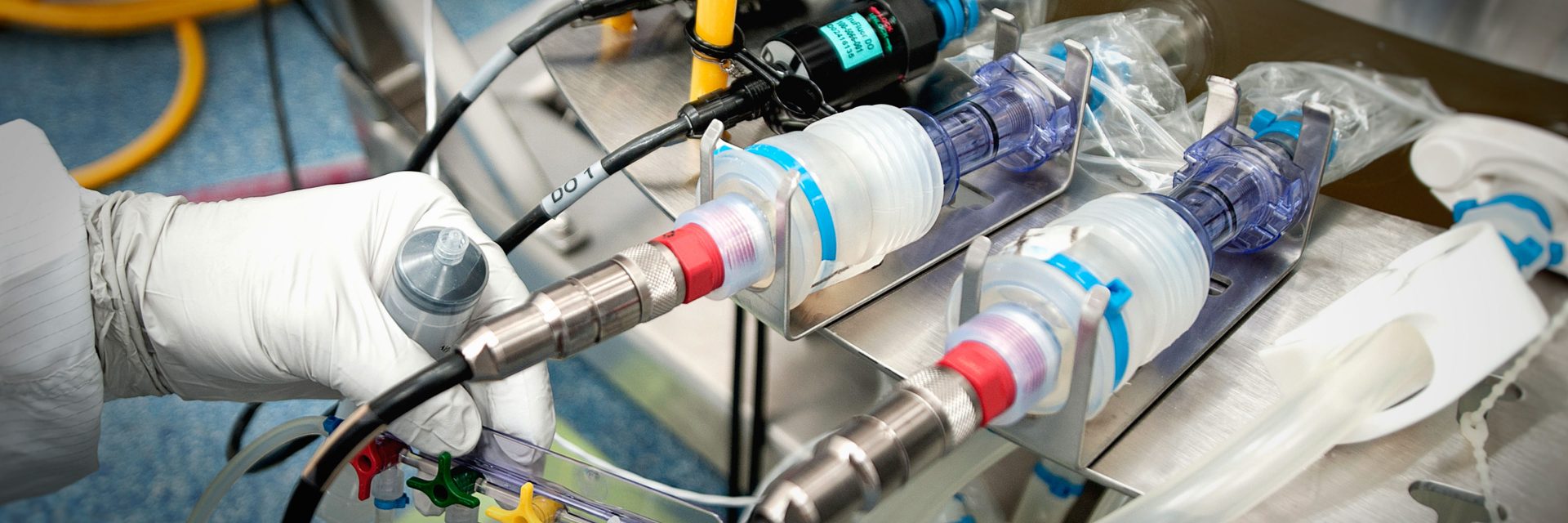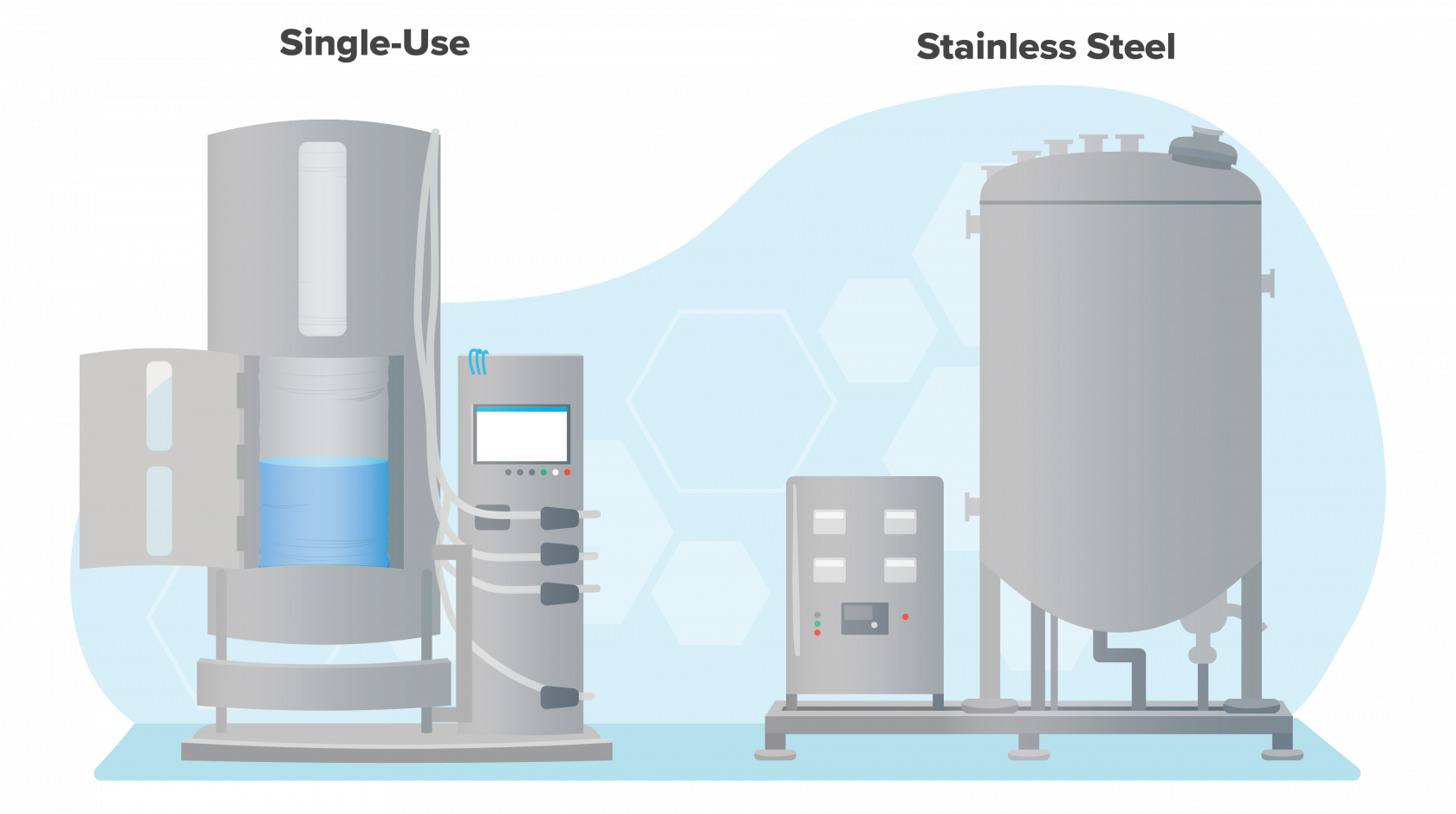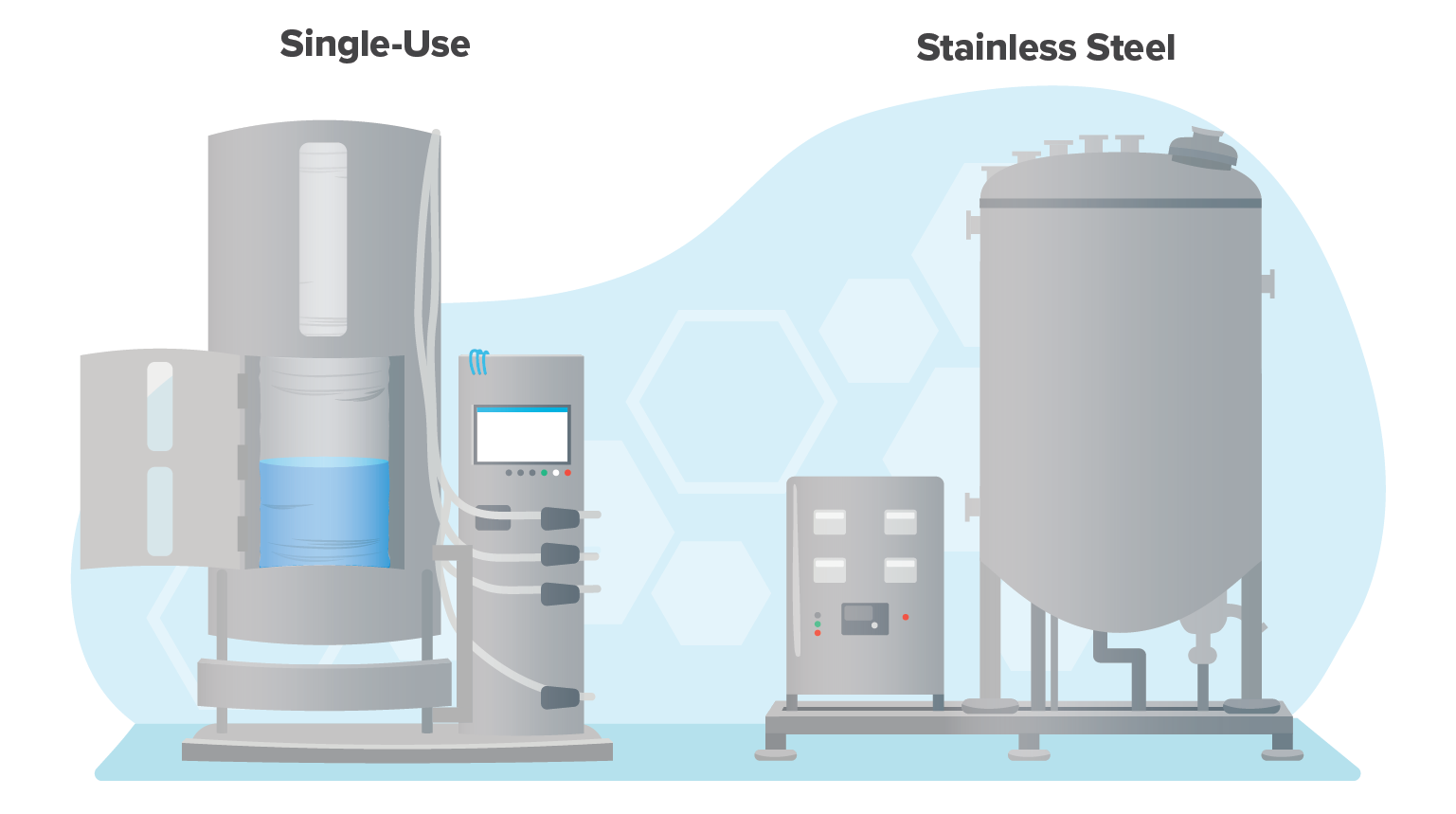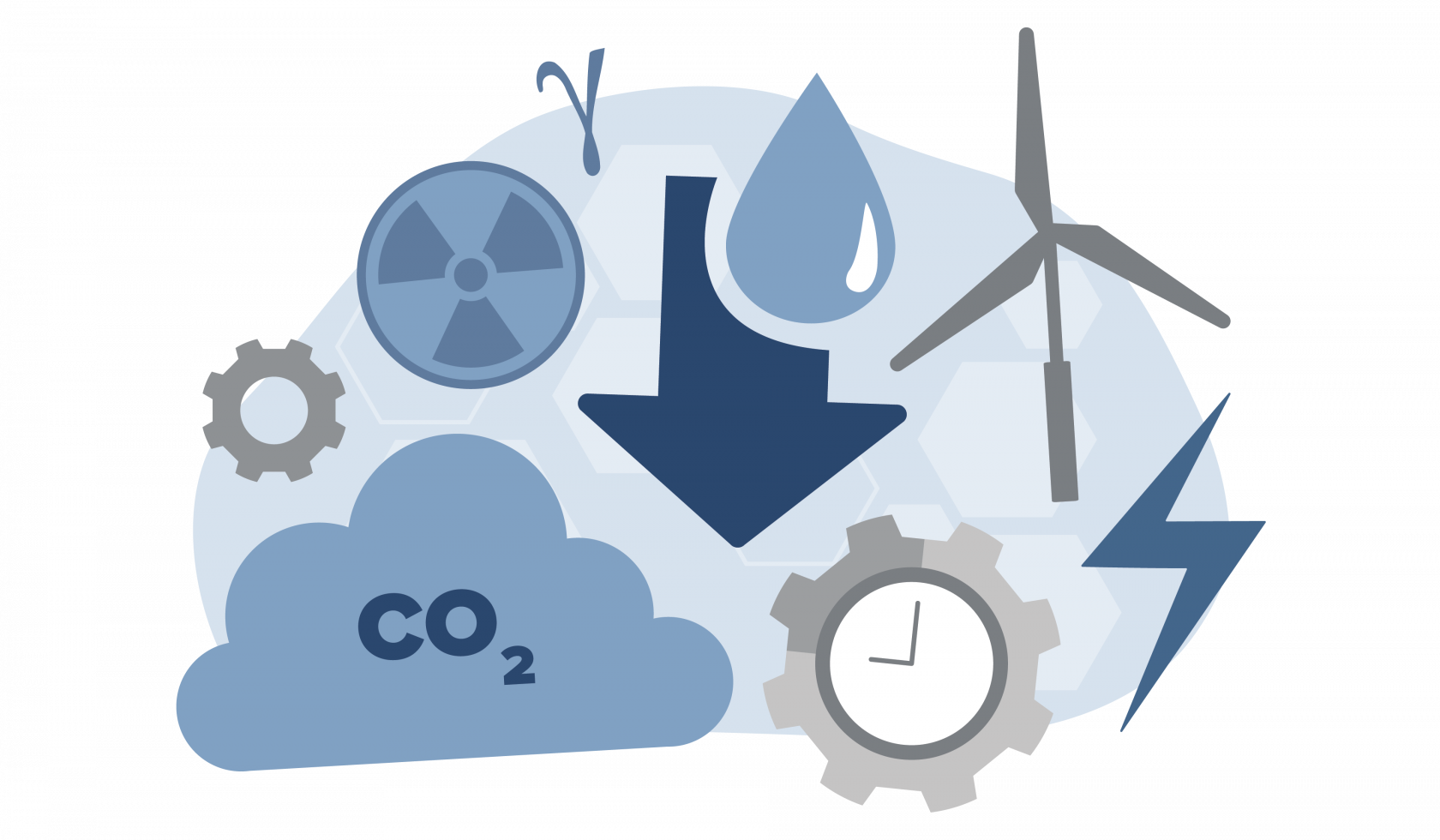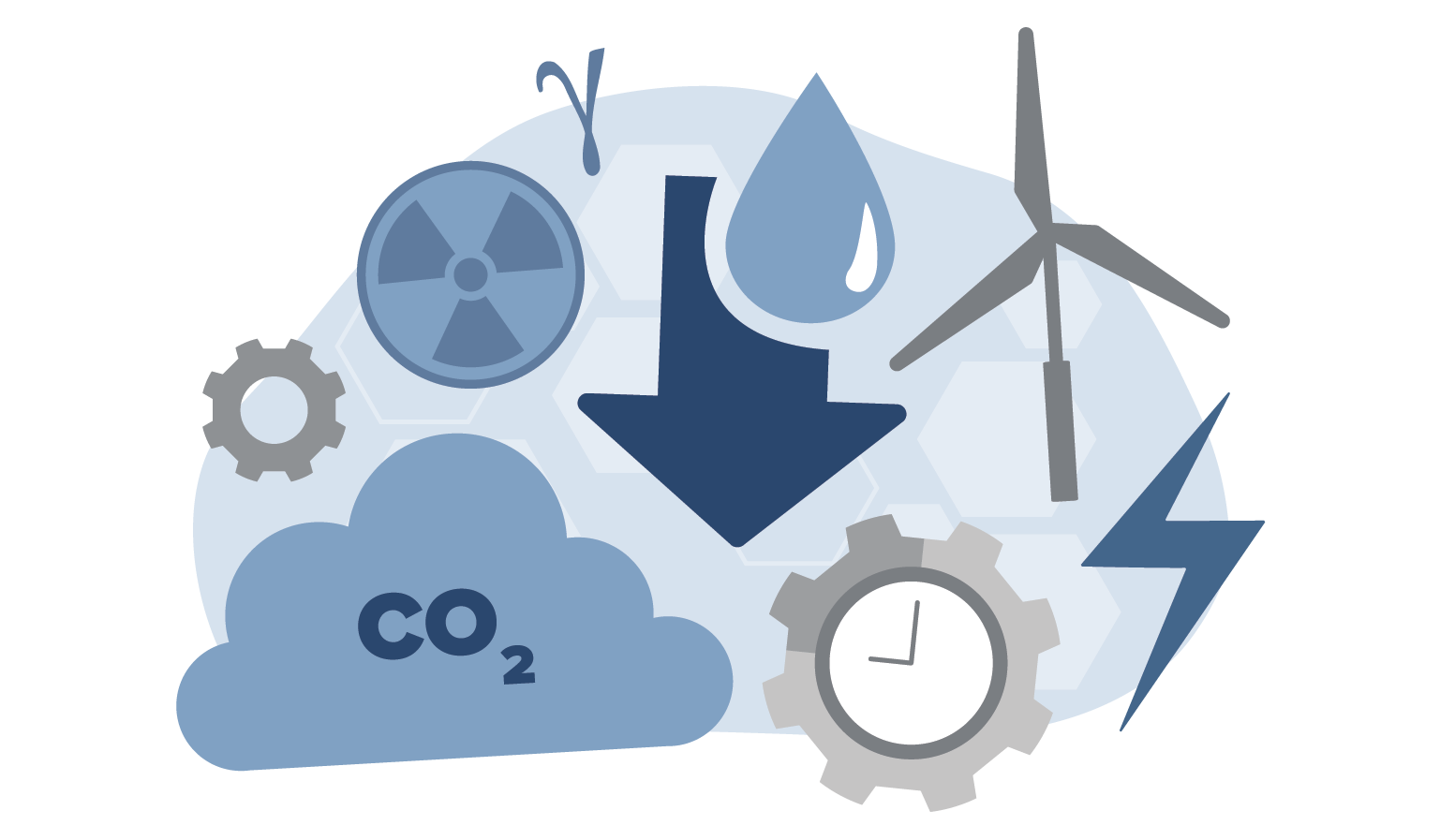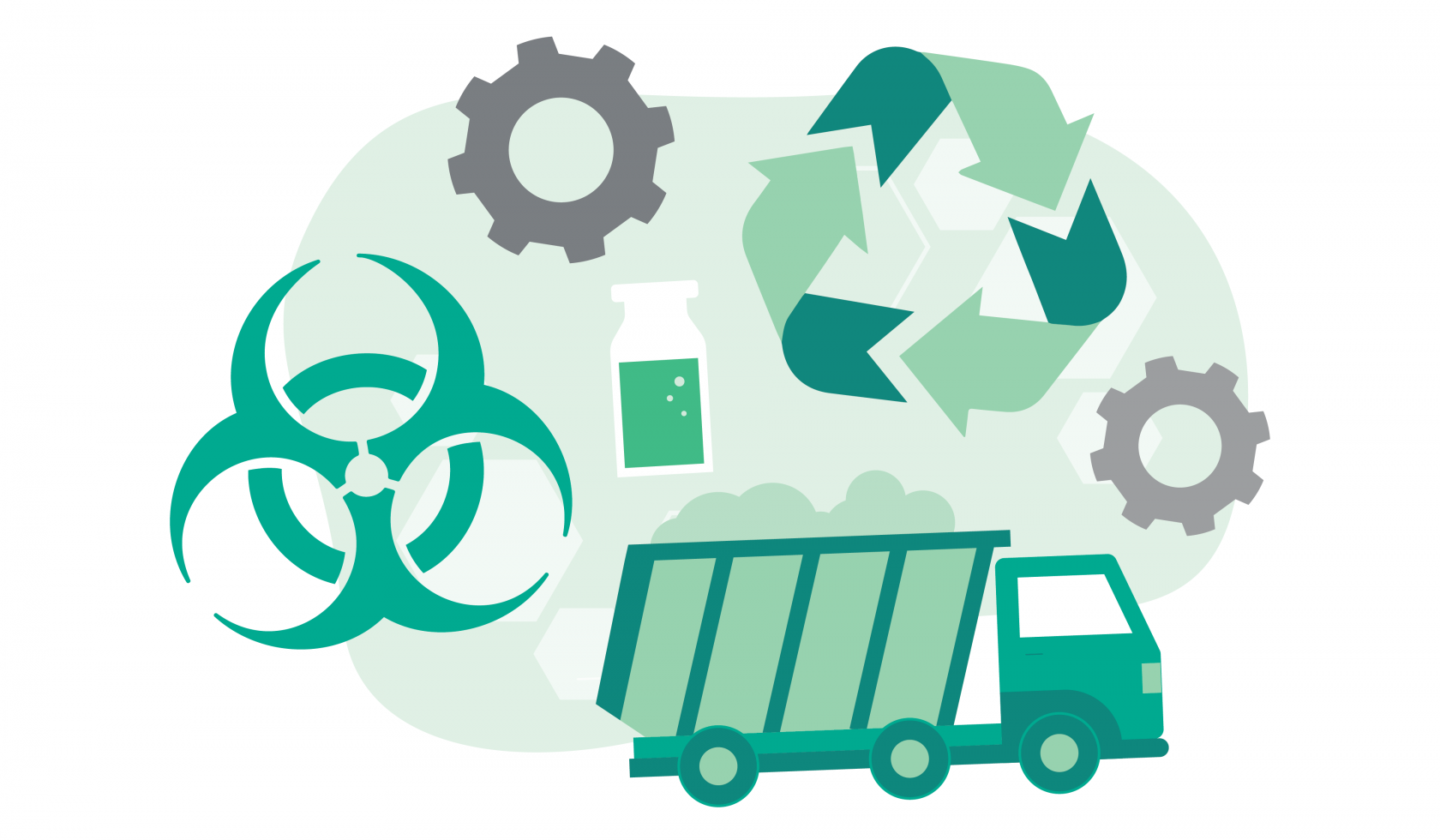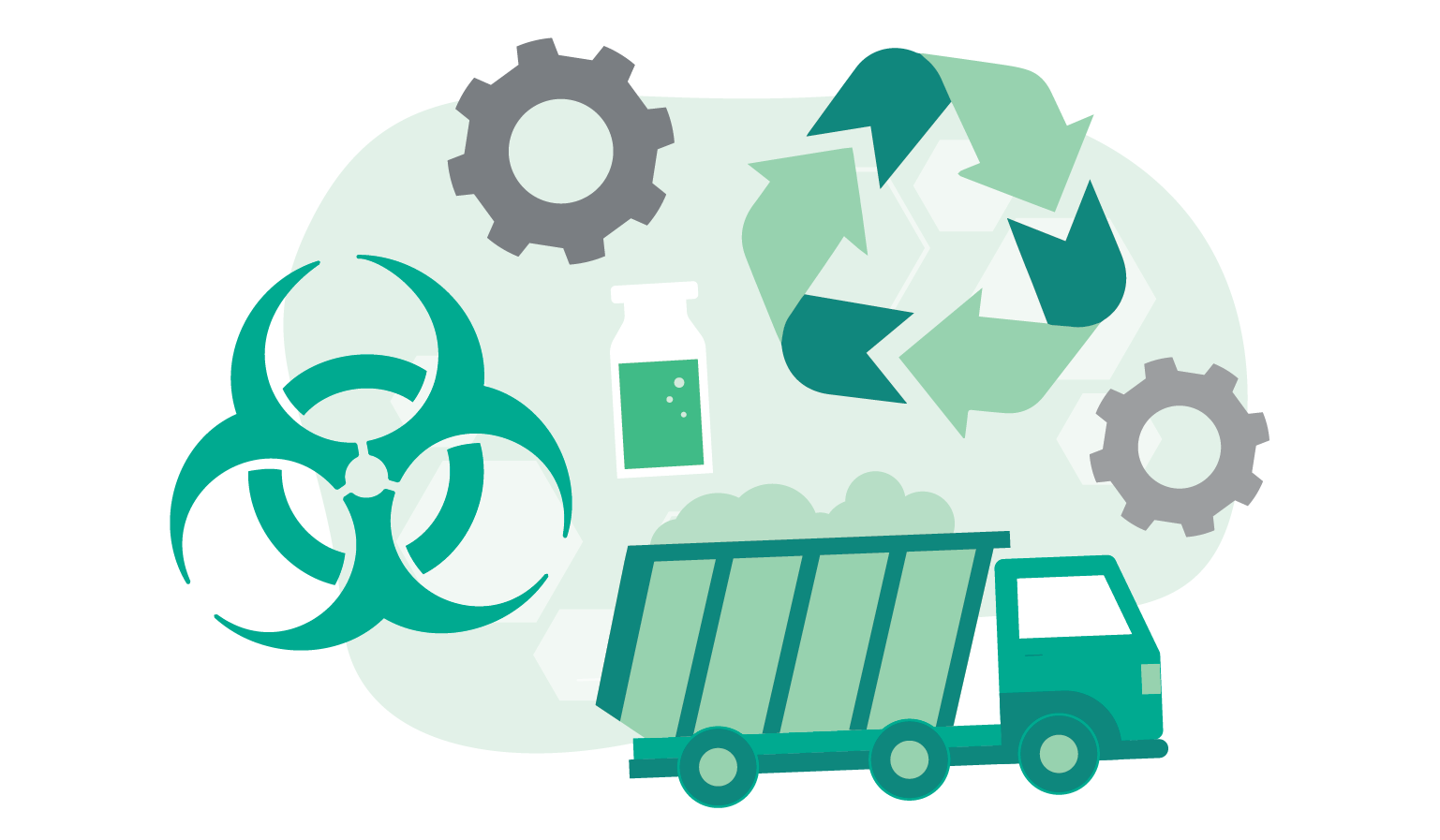Waste disposal
How to sustainably dispose of biopharma plastic waste is complex due to the wide range of polymers that make up plastic components, the potential presence of biological and chemical hazards that need to be inactivated or removed prior to disposal, the cost of various methods, and the geographical availability of facilities capable of alternative methods of disposal. Here are the standard and innovative options to deal with pharmaceutical single-use waste:
Sterilization and disposal at the landfill
While the cheapest and most widely available option is to send waste to a landfill, it comes with high environmental costs. In addition, steam sterilization often adversely affects plastic, making it more difficult to be recycled. For difficult-to-neutralize hazards that cannot be managed by shred and steam, there are alternative solutions such as chemical treatment or gamma irradiation, although these may come with higher capital and operational costs and/or a lack of commercial maturity.
Reuse, recycle, or repurpose
In some cases, disposable components of single-use technology can be reused for test runs and in research and development.
Some, such as tube sets or filters that are not contaminated with hazardous biological or chemical material, can also be recycled. For example, Millipore Sigma’s Biopharma Recycling Program reconstitutes single-use products, such as used liquid or gas filters, which they recycle into industrial-grade plastic lumber. Unfortunately, multiple equipment manufacturers often make similar products, each with a novel and proprietary blend of plastics, making it difficult to have a universal recycling stream for all components. Another limitation is that some plastics contain non-recyclable silicone, such as thermosets. For this and similar situations, evaluate single-use technology suppliers for alternative materials to ensure recyclability. If none currently exist, manufacturers who offer routes for waste diversion may be willing to develop new materials to fit end-user processes.
Plastics that have been heat treated are often unable to be recycled into starting material with properties similar to virgin plastics. In this case, components can be repurposed into non-structural building materials or park benches.
Incineration
Single-use plastic waste incineration offers a low-cost disposal option that is safe for hazardous materials. It also has the potential benefit of power production and thermal energy recovery via cogeneration. However, incineration incurs significant capital costs and generates greenhouse gas emissions (e.g., particulates and gasses).
Pyrolysis
Pyrolysis is a high-heat process that breaks down plastics with temperatures of approximately 4,000o C in the absence of oxygen. While upfront costs can be high, the sustainability benefits are potentially substantial, with one kilogram of plastic converting to approximately one liter of fuel similar to diesel. Commercially viable pyrolysis processes are still in development and require large volumes of plastics to be feasible at the current technological scale.
Steam gasification
Steam gasification is an emerging technology that decomposes plastic into syngas—primarily carbon monoxide and hydrogen—in the presence of high heat, pressure, and steam. Syngas can then be reconstituted into a range of end products and used to generate electricity. The process also generates recoverable heat through the HVAC system at the disposal facility. Of all the alternative disposal options for single-use technology, steam gasification may offer the best route to minimize carbon emissions (depending on the syngas end use) while providing site resiliency in the form of electrical and thermal energy. This type of innovative energy recovery is on the verge of commercial adoption. One such technology, FastOx® Gasification, is being developed by Sierra Energy.

